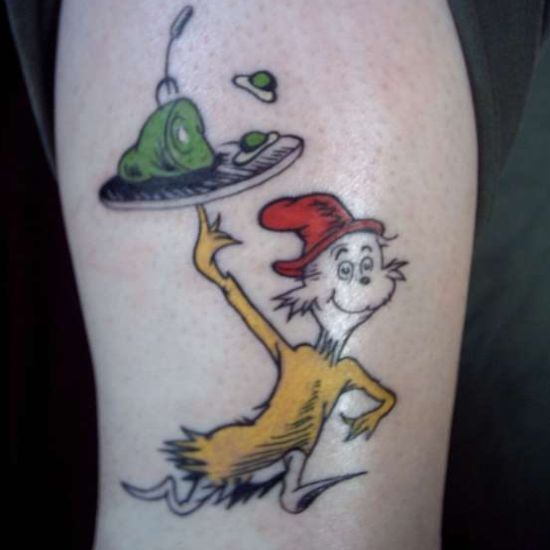Archive for the ‘Intellectual Intertia’ Category
Moving at the Speed of People
 More-with-less is our mantra for innovation. But these three simple words are dangerous because they push us almost exclusively toward efficiency. On the surface, efficiency innovations sound good, and they can be, but more often than not efficiency innovations are about less and fewer. When you create a new technology that does more and costs less the cost reduction comes from fewer hours by fewer people. And if the cash created by the efficiency finances more efficiency, there are fewer jobs. When you create an innovative process that enables a move from machining to forming, hard tooling and molding machines reduce cost by reducing labor hours. And if the profits fund more efficiency, there are fewer jobs. When you create an innovative new material that does things better and costs less, the reduced costs come from fewer labor hours to process the material. And if more efficiency is funded, there are less people with jobs. (The cost reduction could also come from lower cost natural resources, but their costs are low partly because digging them up is done with fewer labor hours, or more efficiently.)
More-with-less is our mantra for innovation. But these three simple words are dangerous because they push us almost exclusively toward efficiency. On the surface, efficiency innovations sound good, and they can be, but more often than not efficiency innovations are about less and fewer. When you create a new technology that does more and costs less the cost reduction comes from fewer hours by fewer people. And if the cash created by the efficiency finances more efficiency, there are fewer jobs. When you create an innovative process that enables a move from machining to forming, hard tooling and molding machines reduce cost by reducing labor hours. And if the profits fund more efficiency, there are fewer jobs. When you create an innovative new material that does things better and costs less, the reduced costs come from fewer labor hours to process the material. And if more efficiency is funded, there are less people with jobs. (The cost reduction could also come from lower cost natural resources, but their costs are low partly because digging them up is done with fewer labor hours, or more efficiently.)
But more-with-less and the resulting efficiency improvements are helpful when their profits are used to fund disruptive innovation. With disruptive innovation the keywords are still less and fewer, but instead of less cost, the product’s output is less; and instead of fewer labor hours, the product does fewer things and satisfies fewer people.
It takes courage to run innovation projects that create products that do less, but that’s what has to happen. When disruptive technologies are young they don’t perform as well as established technologies, but they come with hidden benefits that ultimatley spawn new markets, and that’s what makes them special. But in order to see these translucent benefits you must have confidence in yourself, openness, and a deep personal desire to make a difference. But that’s not enough because disruptive innovations threaten the very thing that made you successful – the products you sell today and the people that made it happen. And that gets to the fundamental difference between efficiency innovations and disruptive innovations.
Efficiency innovations are about doing the familiar in a better way – same basic stuff, similar product functionality, and sold the same way to the same people. Disruptive innovations are about doing less than before, doing it with a less favorable cost signature, and doing it for different (and far fewer) people. Where efficiency innovation is familiar, disruptive innovation is contradictory. And this difference sets the the pace of the two innovations. Where efficiency innovation is governed by the speed of the technology, disruptive innovation is governed by the speed of people.
With efficiency innovations, when the technology is ready it jumps into the product and the product jumps into the market. With disruptive innovations, when the technology is ready it goes nowhere because people don’t think it’s ready – it doesn’t do enough. With efficiency innovations, the new technology serves existing customers so it launches; with disruptive, technology readiness is insufficient because people see no existing market and no existing customers so they make it languish in the corner. With efficiency, it launches when ready because margins are better than before; with disruptive, it’s blocked because people don’t see how the new technology will ultimately mature to overtake and replace the tired mainstream products (or maybe because they do.)
Done poorly efficiency innovation is a race to the bottom; done well it funds disruptive innovation and the race to the top. When coordinated the two play together nicely, but they are altogether different. One is about doing the familiar in a more efficient way, and the other is about disrupting and displacing the very thing (and people) that made you successful.
Most importantly, efficiency innovation moves at the speed of technology while disruptive innovation moves at the speed of people.
Own Your Happiness
 Own your ideas, not the drama.
Own your ideas, not the drama.
Own your words, not the gossip.
Own your vision, not the dogma.
Own your effort, not the heckling.
Own your vacation, not the email.
Own your behavior, not the strife.
Own your talent, not the cynicism.
Own your deeds, not the rhetoric.
Own your caring, not the criticism.
Own your sincerity, not the hot air.
Own your actions, not the response.
Own your insights, not the rejection.
Own your originality, not the critique.
Own your passion, not the nay saying.
Own your loneliness, not the back story.
Own your health, not the irrational workload.
Own your thinking, not the misunderstanding.
Own your stress level, not the arbitrary due date.
Own your happiness.
Seeking Comfort in Discomfort
 There’s a natural desire to create comfort because, well, it’s comfortable. The parents of comfort are sameness and familiarity. To be comfortable we naturally seek out familiarity, and since we’re most familiar with what we did last time, we naturally want to repeat the past. Because we’re familiar with it and because the familiarity makes us comfortable, there’s natural gravitational pull toward the past. Same goes for sameness – it’s comfortable so we seek it out. That’s why there’s so much momentum around what we did last time – familiarity and sameness create comfort and comfort feels comfortable.
There’s a natural desire to create comfort because, well, it’s comfortable. The parents of comfort are sameness and familiarity. To be comfortable we naturally seek out familiarity, and since we’re most familiar with what we did last time, we naturally want to repeat the past. Because we’re familiar with it and because the familiarity makes us comfortable, there’s natural gravitational pull toward the past. Same goes for sameness – it’s comfortable so we seek it out. That’s why there’s so much momentum around what we did last time – familiarity and sameness create comfort and comfort feels comfortable.
And there’s a second level of intellectual inertia created by our desire for comfort. Yes, the parents are the same – sameness and familiarity – but this level of comfort is about comfort with what we have. Whatever success we’ve had, we want to hold onto it so we can feel comfortable. It’s the success we know, it’s what we’re familiar with, and we want sameness around success.
Level one is about comfort around our behavior and level two is about comfort around outcomes of our behavior. We do what we did last time because we know how to do it and we extrapolate – because we did it well last time we’ll do it well this time. We do what we did last time because it worked and we extrapolate – because it worked last time it will work well again. And when the past is repeated, we’ll be comfortable.
This is a fine way to go if things are static – when the rules of the past are the same in the future. But the wheels fall off when things are dynamic – extrapolation doesn’t work when the rules change,and surely we live in dynamic times. If there’s one thing we should be uncomfortable with it’s seeking comfort in familiarity and sameness.
Just as comfort fosters sameness, discomfort drives disruption.
No doubt the future’s rules will be different, and discomfort will be the forcing function. Discomfort with the status quo will propel upstarts to innovate and break rules. For them familiarity and sameness are uncomfortable, and since they too are human, they will seek out comfort. But they will find it in unfamiliarity and difference. They will be comfortable when they disrupt the game, dethrone the leaders, and coronate themselves.
Whether you’re the leader or the start-up, increase your level of discomfort. The leader can create pockets of discomfort (financed by comfort-based success) to break the rules on their own terms and obsolete their best stuff on their own timeline. And the already uncomfortable start-up can add more to harden itself for the tough times ahead.
Maximizing comfort does not maximize business success. There is little learning without discomfort and there is no adaptation without it. If you’re feeling comfortable, that’s the telltale sign you shouldn’t.
Acceleration Is King
 Everything is about speed – speed through process reengineering, waste elimination, standardization, modularity, design reuse. All valid, but not all that powerful. Real speed comes from avoiding rapid progress in the wrong direction, from avoiding a blistering pace on the wrong stuff. Real speed comes from saying no to the work that creates drag in order to say yes to work that accelerates.
Everything is about speed – speed through process reengineering, waste elimination, standardization, modularity, design reuse. All valid, but not all that powerful. Real speed comes from avoiding rapid progress in the wrong direction, from avoiding a blistering pace on the wrong stuff. Real speed comes from saying no to the work that creates drag in order to say yes to work that accelerates.
It’s healthy to have time limits and due dates, finite resources, and budgets. These constraints are helpful because they force a cutoff decision: what work will get done and what won’t. And thankfully, all businesses have them – take them away and eliminate all hope of profitability and sustainability. But from a speed perspective, sometime we look at them in a backward way.
Yes, that work would change the game, but we don’t have time. That argument is a little misleading. Truth is, there’s the same amount of time as last year – a week is still a week, and there are still 52 of them in a year. It’s not about time; it’s about the work done during that time. With a backwards view, the constraint calls attention to work won’t get done, but the constraint is really about work that will get done. If the work that doesn’t make the cut is less magical than the work that does, the constraint creates a speed problem – too slow on the game-changing work. The speed problem is realized when the new kid on the block makes magic and you don’t. If the constraint helps say yes to magic and no to lesser work, there’s no speed problem.
Yes, we could reinvent the industry, but we don’t have resources. No, we have resources. But the constraint isn’t really about resources, it’s about the work. And not any old work, the constraint is about the work that will get done. (Not the work that won’t.) If the constraint causes us to stuff our fingers in the holes in the dyke at the expense of eliminating it altogether, the constraint caused a speed problem. It’s a problem because while we’re plugging holes, an eager competitor will dismantle the need for the dyke. Speed problem.
Sure, we’d leapfrog the competition, but we don’t have the budget. No, we have a budget. But, like the other constraints, the budgetary one is also about the work that will get done. If the constraint prioritizes same-as-last-time over crazy, it creates a speed problem. New competitors who don’t have to protect the old guard products will work on crazy and bring it to market. And that’s a problem because you’ll have more of what you’ve always had and they’ll have crazy.
Yes, in all cases, choose the bigger bet. Choose crazy over sane, magical over mundane, and irregular over regular. And choose that way because it’s faster. And here’s why faster is king: The number of countries with a well educated work force is growing; there’s an ever increasing number of micro companies who can afford to bet on disruptive technologies; and the internet has shown the world how their lives could be and created several billion people who will use their parental fortitude to do whatever it takes to make life better for their kids. (And there’s no stronger force on earth.) And it all sums to an incredible amount of emotional energy relentlessly pushing the pace.
The world isn’t just getting faster, it’s accelerating – yes, next month will be faster than this month, but that’s not the real trick with acceleration. With acceleration the faster things get, the faster they get faster. Is there really any question how to use your constraints?
Wrestle Your Success To The Ground
 Innovation, as a word, has become too big for its own good, and, as a word, is almost useless. Sure, it can be used to enable magical reinvention of business models and revolutionary products and technologies, but it can also be used to rationalize the rehash work we were going to do anyway. The words that send angry chills down the back of the would-be-innovative company – “We’re already doing it.”
Innovation, as a word, has become too big for its own good, and, as a word, is almost useless. Sure, it can be used to enable magical reinvention of business models and revolutionary products and technologies, but it can also be used to rationalize the rehash work we were going to do anyway. The words that send angry chills down the back of the would-be-innovative company – “We’re already doing it.”
When company leaders talk about doing more innovation, there’s a lot of pressure in the organization to point to innovative things already being done. The organization misinterprets the desire for more innovation as a negative commentary on their work. The mental dialog goes like this – We’re good at our work, we’re working as hard as we can, and we’re doing all we can to meet objectives – hey, look at this innovative stuff we’re doing. Clearly this isn’t what company leaders are looking for, but the word does have that influence.
What can feel better is to describe what is meant by innovation. Wherever we are, whatever successes we’ve had, we want to change our behaviors to create new, more profitable business models; create new products and technologies that obsolete our best, most profitable ones; and change our behaviors to create new, more profitable markets. The key is to acknowledge that our existing behaviors are the very thing that has created our success (and thank them for it), and to acknowledge the desire to build on our success by obsoleting it. When we ask for more innovation, we’re asking for new behaviors to dismantle our current day success behind us to create the next level of success.
There’s a tight link to innovation and failure – risk, learning, experimentation – but there’s a missing link with success. Acknowledgement of success helps the organization retain its self worth and helps them feel good about trying new stuff. However, even still, success is huge deterrent to innovation. Company success will retain the behaviors that created it, and more strongly, as new behaviors are injected, the antibodies of success will reject them. Our strength becomes our weakness.
Strong technologies become anchors to themselves; successful, stable, long-running markets hold tightly to resources that created them; and time-tested business models are above the law. New behaviors almost don’t stand a chance.
Fear of losing what we have is the number one innovation blocker. Where failure blocks innovation narrowly in the blast zone, success smears a thick layer of inaction across the organization. What’s most insidious, since we celebrate success, since we laud customer focus, since we track and reward efficiently doing what we’ve done, we systematically thicken and stiffen the layer that gums up innovation.
Instead of starting with a call-to-arms for innovation, it’s best to define company values, mission, and strategic objectives. Then, and only then, define innovation as the way to get there. First company objectives, then innovation as the path.
Innovation, as a word, isn’t important. What’s important are the new behaviors that will wrestle success to the ground, and pin it.
A Healthy Dissatisfaction With Success
 They say job satisfaction is important for productivity and quality. The thinking goes something like this: A happy worker is a productive one, and a satisfied worker does good work. This may be true, but it’s not always the best way.
They say job satisfaction is important for productivity and quality. The thinking goes something like this: A happy worker is a productive one, and a satisfied worker does good work. This may be true, but it’s not always the best way.
I think we may be better served by a therapeutic dose of job dissatisfaction. Though there are many strains of job satisfaction, the most beneficial one spawns from a healthy dissatisfaction with our success. The tell-tale symptom of dissatisfaction is loneliness, and the invasive bacterium is misunderstanding. When the disease is progressing well, people feel lonely because they’re misunderstood.
Recycled ideas are well understood; company dogma is well understood; ideas that have created success are well understood. In order to be misunderstood, there must be new ideas, ideas that are different. Different ideas don’t fit existing diagnoses and create misunderstanding which festers into loneliness. In contrast, when groupthink is the disease there is no loneliness because there are no new ideas.
For those that believe last year’s ideas are good enough, different ideas are not to be celebrated. But for those that believe otherwise, new ideas are vital, different is to be celebrated, and loneliness is an important precursor to innovation.
Yes, new ideas can grow misunderstanding, but misunderstanding on its own cannot grow loneliness. Loneliness is fueled by caring, and without it the helpful strain of loneliness cannot grow. Caring for a better future, caring for company longevity, caring for a better way – each can create the conditions for loneliness to grow.
When loneliness is the symptom, the prognosis is good. The loneliness means the organization has new ideas; it means the ideas are so good people are willing to endure personal suffering to make them a reality; and, most importantly, it means people care deeply about the company and its long term success.
I urge you to keep your eye out for the markers that define the helpful strain of loneliness. And when you spot it, I hope you will care enough to dig in a little. I urge you think of this loneliness as the genes of a potentially game-changing idea. When ideas are powerful enough to grow loneliness, they’re powerful enough to move from evolutionary into revolutionary.
Error Doesn’t Matter, Trial Does
 If you want to learn, to really learn, experiment.
If you want to learn, to really learn, experiment.
But I’m not talking about elaborate experiments; I’m talking about crude ones. Not simple ones, crude ones.
We were taught the best experiments maximize learning, but that’s dead wrong. The best experiments are fast, and the best way to be fast is to minimize the investment.
In the name of speed, don’t maximize learning, minimize the investment.
Let’s get right to it. One of the best tricks to minimize investment is to minimize learning – learning per experiment, that is. Define learning narrowly, design the minimum experiment, and run the trial. Learning per trial is low, but learning per month skyrockets because the number of trials per month skyrockets. But it gets better. There’s an interesting learning exponential at work. The first trial informs the second which shapes the third. But instead of three units of learning, it’s cubic. And minimizing learning doesn’t just half the time to run a trial, it reduces it by 100 or more. It’s earning to the hundredth power.
Another way to minimize investment is to minimize resolution. Don’t think nanometers, think thumbs up, thumbs down. Design the trial so the coarsest measuring stick gives an immediate and unambiguous response. There’s no investment in expensive measurement gear and no time invested in interpretation of results. Think sledgehammer to the forehead.
A third way to minimize investment is to evaluate relative differences. The best example is the simple, yet powerful, A-B test . Run two configurations, decide which is better, and run quickly in the direction of goodness. No need to fret about how much better, just sprint toward it. The same goes for trial 1 versus trial 2 comparisons. Here’s the tricky algorithm: If trial 2 is better, do more of that. And the good news applies here too – the learning exponential is still in play. Better to the hundredth power, in record time.
I don’t care what norms you have to bend or what rules you have to break. If you do one thing, run more trials.
But don’t take my word for it. Dr. Seuss had it right:
And I would run them in a boat!
And I would run them with a goat…
And I will run them in the rain.
And in the dark. And on a train.
And in a car. And in a tree.
They are so good so good you see!
Innovation Eats Itself
 We all want more innovation, though sometimes we’re not sure why. Turns out, the why important.
We all want more innovation, though sometimes we’re not sure why. Turns out, the why important.
We want to be more innovative. That’s a good vision statement, but it’s not actionable. There are lots of ways to be innovative, and it’s vitally important to figure out the best flavor. Why do you want to be more innovative?
We want to be more innovative to grow sales. Okay, that’s a step closer, but not actionable. There are many ways to grow sales. For example, the best and fastest way to sell more units is to reduce the price by half. Is that what you want? Why do you want to grow sales?
We want to be more innovative to grow sales so we can grow profits. Closer than ever, but we’ve got to dig in and create a plan.
First, let’s begin with the end in mind. We’ve got to decide how we’ll judge success. How much do we want to grow profits? Double, you say? Good – that’s clear and measurable. I like it. When will we double profits? In four years, you say? Another good answer – clear and measureable. How much money can we spend to hit the goal? $5 million over four years. And does that incremental spending count against the profit target? Yes, year five must double this year’s profits plus $5 million.
Now that we know the what, let’s put together the how. Let’s start with geography. Will we focus on increasing profits in our existing first world markets? Will we build out our fledgling developing markets? Will we create new third world markets? Each market has different tastes, cultures, languages, infrastructure requirements, and ability to pay. And because of this, each requires markedly different innovations, skill sets, and working relationships. This decision must be made now if we’re to put together the right innovation team and organizational structure.
Now that we’ve decided on geography, will we do product innovation or business model innovation? If we do product innovation, do we want to extend existing product lines, supplement them with new product lines, or replace them altogether with new ones? Based on our geography decision, do we want to improve existing functionality, create new functionality, or reduce cost by 80% of while retaining 80% of existing functionality?
If we want to do business model innovation, that’s big medicine. It will require we throw away some of the stuff that has made us successful. And it will touch almost everyone. If we’re going to take that on, the CEO must take a heavy hand.
For simplicity, I described a straightforward, linear process where the whys are clearly defined and measurable and there’s sequential flow into a step-wise process to define the how. But it practice, there’s nothing simple or linear about the process. At best there’s overwhelming ambiguity around why, what, and when, and at worst, there’s visceral disagreement. And worse, with 0% clarity and an absent definition of success, there are several passionate factions with fully built-out plans that they know will work.
In truth, figuring out what innovation means and making it happen is a clustered-jumbled path where whats inform whys, whys transfigure hows, which, in turn, boomerang back to morph the whats. It’s circular, recursive, and difficult.
Innovation creates things that are novel, useful, and successful. Novel means different, different means change, and change is scary. Useful is contextual – useful to whom and how will they use it? – and requires judgment. (Innovations don’t yet exist, so innovation efforts must move forward on predicted usefulness.) And successful is toughest of all because on top of predicted usefulness sit many other facets of newness that must come together in a predicted way, all of which can be verified only after the fact.
Innovation is a different animal altogether, almost like it eats itself. Just think – the most successful innovations come at the expense of what’s been successful.
A Race To The Top
 We all want to increase sales. But to do do this, our products must offer a better value proposition – they must increase the goodness-to-cost ratio. And to do this we increase goodness and decrease cost. (No argument here – this is how everyone does it.) When new technologies mature, we design them in to increase goodness and change manufacturing and materials to reduce cost. Then, we sell. This is the proven cowpath. But there’s a problem.
We all want to increase sales. But to do do this, our products must offer a better value proposition – they must increase the goodness-to-cost ratio. And to do this we increase goodness and decrease cost. (No argument here – this is how everyone does it.) When new technologies mature, we design them in to increase goodness and change manufacturing and materials to reduce cost. Then, we sell. This is the proven cowpath. But there’s a problem.
The problem is everyone is thinking this way. You’re watching/developing the same technologies as your competitors; improving the same manufacturing processes; and trying the same materials. On its own, this a recipe for hyper-competition. But with the sinking economy driving more focus on fewer consumers, price is the differentiator. With this cowpath it’s a race to the bottom.
But there’s a better way where there are no competitors and millions (maybe billions) of untapped consumers clamoring for new products. Yes, it’s based on the time-tested method of improving the goodness-to-cost ratio, but there’s a twist – instead of more it’s less. The ratio is increased with less goodness and far less cost. Since no one in their right mind will take this less-with-far-less approach, there is no competition – it’s just you. And because you will provide less goodness, you must sell where others don’t – into the untapped sea of yet-to-be consumers of developing world. With less-with-far-less it’s a race to the top.
Technology is the most important element of less-with-far-less. By reducing some goodness requirements and dropping others all together, immature technologies become viable. You can incorporate fledgeling technologies sooner and commercialize products with their unreasonably large goodness-to-cost ratios. The trick – think less output and narrow-banded goodness.
Immature technologies have improved goodness-to-cost ratios (that’s why we like them), but their output is low. But when a product is designed to require less output, previously immature technologies become viable. Sure, there’s a little less goodness, but the cost structure is far less – just right for the developing world.
Immature technologies are more efficient and smaller, but their operating range is small. But when a product is designed to work within a narrow band of goodness, technologies become viable sooner. Yes, the product does less, but the cost structure is far less – a winning combination for the developing world.
Less-with-far-less makes the product fit the technology – that’s not the hard part. And less-with-far-less makes the product fit the developing world – not hard. In our all-you-can-eat world, where more is seen as the only way, we can’t comprehend how less can win the race to the top. The hard part is less.
Less-with-far-less is not limited by technology or market – it’s limited because we can’t see less as more.
Curiosity Fuels Creativity
 Creativity generates things that are novel and useful. Make them successful, and you’ve got innovation. There can be no innovation without creativity.
Creativity generates things that are novel and useful. Make them successful, and you’ve got innovation. There can be no innovation without creativity.
We associate creativity with innate ability that only some have; with transparent happenings that can’t be codified; with eureka moments that come from the subconscious. If anything defies process, it’s creativity. So let’s not use process to squelch creativity, let’s foster behaviors that spawn creativity.
Curiosity is the kindling for creativity; fan its flames and creativity ignites. There a two parts to curiosity – to see things as they are and to propose what could be.
To see things as they are is to create awareness of what is – awareness of context, or changes in context, awareness of worn paths and anomalies, and awareness at high and low levels of abstraction. It takes a disciplined, uncluttered mind to become aware of a new reality, especially while sitting in the old one. And because uncluttering comes only from slack time, to see things as they are is doubly difficult.
The next part of curiosity is to challenge what is in order to propose what could be. To start, root cause must be understood for the new what is. This requires active rejection of old fundamentals and a deep dive to understand new ones. This is toughest when the old fundamentals have been (and are still) successful. (And it’s doubly tough because it requires slack time.) Curiosity twists, pounds, and bends the new fundamentals into a future reality which culminates with a proposal of what could be. Done right, curiosity’s proposal is borderline heretical.
The good news is we don’t need new people – we have plenty of creative capacity. But here’s the bad news – our process thinking isn’t going to get us there because it’s all about behaviors. It’s time to think about how to change things so we can spend more time on behaviors that generate creativity. But if you must use process thinking, come up with a process that lets us spend more time on creative behaviors
The thinking (and some of the language) for this post came from Diego Uribe, a true thought leader in creativity. Thank you Diego.
Mindset for Doing New
 The more work I do with innovation, the more I believe mindset is the most important thing. Here’s what I believe:
The more work I do with innovation, the more I believe mindset is the most important thing. Here’s what I believe:
Doing new doesn’t take a lot of time; it’s getting your mind ready that takes time.
Engineers must get over their fear of doing new.
Without a problem there can be no newness.
Problem definition is the most important part of problem solving.
If you believe it can work or it can’t, you’re right.
Activity is different from progress.
Thinking is progress.
In short, I believe state-of-the-art is limited by state-of-mind.
 Mike Shipulski
Mike Shipulski